Is a teaching career calling your name? Perhaps you are a professional considering a rewarding change of pace. The classroom offers a unique chance to shape young minds and leave a lasting mark on the world. It’s more than just imparting knowledge; it’s about fostering growth, inspiring curiosity, and equipping the next generation with the tools they need to succeed.
But shifting careers isn’t always smooth sailing. You may face a maze of requirements, certifications, and perhaps a bit of uncertainty about what to expect. More than 50% of new teachers leave the profession within the first five years, according to the National Education Association. This is often due to lack of support, burnout, or feeling unprepared for the realities of the classroom.
This guide will serve as your roadmap to making a successful transition into a teaching career. We will dive deep into everything you need to know, from assessing your readiness and navigating the certification process to landing your dream job and thriving in your first year. Consider this your comprehensive resource for turning your passion for education into a fulfilling teaching career.
Finding Your Fit: Is a Teaching Career Right for You?
Before diving into the logistics of becoming a teacher, take a hard look at your skills, your passions, and what you hope to achieve in this teaching career. Teaching is not just a job, it’s a demanding calling that requires more than just subject knowledge.
Ask yourself these questions:
- Do I have a genuine passion for learning and sharing knowledge? This is core to inspiring students. It’s a passion that bubbles up from inside and cannot be faked.
- Am I patient and understanding? Patience is key when dealing with diverse learning styles and behavior. Students learn at different paces. Some concepts click immediately, while others require more time and effort.
- Can I communicate effectively with different audiences? You’ll need to communicate with students, parents, and fellow staff. The way you speak with a student will differ greatly from how you talk to a parent at a conference or to a fellow teacher during a staff meeting.
- Am I organized and adaptable? Lesson planning and classroom management are crucial for student success.
- Am I resilient and able to handle stress? Teaching can be emotionally taxing, and you’ll face challenges. You may face difficult parents, unmotivated students, and the pressure of standardized testing.
- Am I willing to commit to ongoing learning and professional development? Education is a constantly evolving field. What works today may not work tomorrow, so you will always need to be learning and growing.
- Do I find joy in seeing others succeed? The greatest reward in teaching career comes from seeing your students grow and achieve their full potential. Seeing a student grasp a difficult concept for the first time can bring a great sense of pride and fulfillment.
- Am I self-reflective and able to take constructive criticism? Good teachers never stop improving. You will want to always examine your practices and look for ways to make it even better.
- Am I a good team player? You will need to work closely with other teachers, administrators, and support staff to create the best possible learning environment for your students.
If you answered yes to most of these questions, a teaching career may be a good fit for you. If you answered no to more than half, think about what areas need to be improved upon, or if you can pivot into another related role in education, such as a tutor, a school counselor, or an administrator. The more clearly you can define your personal motivations, the better prepared you will be for the teaching career ahead.
Exploring Your Options: Teaching Roles and Settings
The world of education is vast, with many roles and settings to explore. The more that you know about the landscape, the better you can find a place that fits with your skills and interests.
Here’s a look at some popular options:
- Elementary School Teacher: Focus on foundational skills like reading, writing, and math for grades K-5.
- Middle School Teacher: Guide students through adolescence with a broader range of subjects for grades 6-8.
- High School Teacher: Specialize in specific subjects and prepare students for college or careers for grades 9-12.
- Special Education Teacher: Support students with disabilities in inclusive or specialized settings.
- Early Childhood Educator: Work with young children (ages 3-5) to develop social, emotional, and cognitive skills.
- Substitute Teacher: Fill in for absent teachers on a temporary basis.
- Career and Technical Education (CTE) Teacher: Teach practical skills in areas like culinary arts, automotive technology, or healthcare.
- English as a Second Language (ESL) Teacher: Assist students from diverse backgrounds in acquiring English language proficiency.
- Online Teacher: Deliver instruction remotely through virtual platforms.
Different Educational Settings
Beyond the role, the setting can also have a big impact on your experience. Here are just a few examples.
- Public Schools: Funded by the government, offering free education to all students. Public schools have a lot of job security and often good benefits, but face bureaucracy and lack of resources.
- Private Schools: Funded by tuition and donations, often with a specific focus (e.g., religious, college preparatory). Private schools can pay less than public schools and can lack the same level of job security, but they also have more autonomy.
- Charter Schools: Publicly funded but independently run, often with innovative teaching methods. Charter schools can have long hours and a lot of pressure to perform, but also pay better than public schools and have more innovative environments.
- Magnet Schools: Public schools with a specialized focus (e.g., science, arts) attracting students from across districts.
- Alternative Schools: Designed for students who have struggled in traditional settings, often with smaller class sizes and individualized attention.
Considerations for Choosing
Think about the age group you enjoy working with, the subjects you are passionate about, and the type of environment where you feel you can thrive. A 2023 study published in Educational Researcher emphasized the importance of matching teacher preferences with school characteristics to improve job satisfaction and retention. If you’re unsure, volunteering or shadowing different types of teachers can offer valuable insight.
The Need for Teachers is High
The US is currently experiencing a shortage of teachers, especially in certain subjects like math, science, and special education. According to a report by the Economic Policy Institute, the teacher shortage is likely to continue in the coming years due to factors such as low pay, poor working conditions, and increasing student enrollment. This makes it a good time to consider a teaching career, as opportunities are readily available.
Paving the Way: Certification and Licensing Requirements
One of the first steps in transitioning to a teaching career is understanding the certification and licensing requirements in your state. These requirements ensure that all teachers meet minimum standards of knowledge and skills.
State-Specific Requirements
Each state has its own unique set of rules and regulations, so it’s very important to research the specific requirements in the state where you plan to teach. Visit the website of your state’s Department of Education for up-to-date information.
Typical requirements include:
- Bachelor’s Degree: Most states require a bachelor’s degree from an accredited college or university.
- Teacher Preparation Program: Complete a state-approved teacher preparation program. This may involve coursework, student teaching, and field experiences.
- Content Knowledge Test: Pass a standardized test demonstrating your knowledge of the subject area you plan to teach.
- Basic Skills Test: Pass a basic skills test assessing your reading, writing, and math abilities.
- Background Check: Undergo a criminal background check.
Alternative Certification Pathways
If you already have a bachelor’s degree but did not complete a traditional teacher preparation program, you may be eligible for an alternative certification pathway.
Common alternative routes include:
- Master’s Degree Programs: Earn a master’s degree in education, often combined with teacher certification.
- Residency Programs: Participate in a year-long residency program working alongside an experienced teacher.
- Teach for America: Join a program that places teachers in high-need schools.
- Troops to Teachers: A program that helps veterans transition to a teaching career.
Testing Requirements
Standardized tests are a common part of the certification process. The most common tests are the Praxis exams, which assess both basic skills and subject matter knowledge.
- Praxis Core: Measures basic skills in reading, writing, and math.
- Praxis Subject Assessments: Assess your knowledge of specific subject areas, such as mathematics, science, or English language arts.
Consult your state’s Department of Education for specific testing requirements and passing scores.
Navigating the Process
The certification process can be complex, but these steps can help.
- Research your state’s requirements: Start by visiting your state’s Department of Education website.
- Contact a certification officer: Many states have certification officers who can answer your questions.
- Gather your transcripts and documents: Collect all the necessary paperwork, such as transcripts, test scores, and letters of recommendation.
- Submit your application: Complete the application form and submit it along with all required documents.
- Pay the fees: Certification fees vary by state.
- Complete any additional requirements: Some states may require additional coursework or training.
Gaining Experience: Student Teaching and Internships
Student teaching and internships are valuable opportunities to gain hands-on experience in the classroom before fully transitioning to a teaching career.
Benefits of Student Teaching
Student teaching involves working under the supervision of an experienced teacher, providing you with the chance to:
- Apply your knowledge: Put theory into practice by planning and delivering lessons.
- Develop classroom management skills: Learn how to manage student behavior and create a positive learning environment.
- Receive feedback: Get constructive criticism from your supervising teacher and university supervisor.
- Network with educators: Build relationships with teachers, administrators, and other school staff.
- Gain confidence: Build your confidence and prepare for the challenges of being a full-time teacher.
Finding Opportunities
Most teacher preparation programs include a student teaching component. If you are pursuing an alternative certification pathway, you may need to seek out student teaching or internship opportunities on your own.
Here are some resources:
- Local schools and districts: Contact schools and districts in your area to inquire about opportunities.
- Teacher preparation programs: Reach out to local teacher preparation programs for guidance.
- Online job boards: Check job boards like Indeed or LinkedIn.
- Professional organizations: Connect with professional organizations like the National Education Association.
Making the Most of Your Experience
- Be proactive: Take initiative and ask to participate in all aspects of the classroom.
- Observe experienced teachers: Learn from the best by observing experienced teachers in action.
- Reflect on your practice: Take time to reflect on your teaching and identify areas for improvement.
- Seek feedback: Ask for regular feedback from your supervising teacher and university supervisor.
- Build relationships: Get to know your students, their families, and your colleagues.
- Be open to new ideas: Be willing to try new teaching methods and strategies.
- Stay organized: Keep track of your lesson plans, assignments, and student progress.
Alternative Options
If student teaching is not feasible, consider other ways to gain experience, such as:
- Tutoring: Provide one-on-one or small group instruction to students.
- Volunteering: Volunteer in classrooms or after-school programs.
- Substitute Teaching: Fill in for absent teachers on a temporary basis.
Polishing Your Skills: Professional Development and Training
Continuous professional development and training are vital for success in a teaching career. The field of education is ever-evolving, and teachers need to stay up-to-date on the latest research, best practices, and technologies.
Benefits of Professional Development
- Enhance teaching skills: Improve your ability to plan lessons, manage classrooms, and assess student learning.
- Stay current: Keep up with the latest trends and research in education.
- Improve student outcomes: Enhance student achievement and engagement.
- Meet certification requirements: Fulfill continuing education requirements for maintaining your teaching license.
- Advance your career: Open doors to leadership positions and other career opportunities.
Types of Professional Development
- Workshops and conferences: Attend workshops and conferences offered by professional organizations, universities, and school districts.
- Online courses: Take online courses on a variety of topics related to education.
- Mentoring programs: Participate in mentoring programs where you can learn from experienced teachers.
- Graduate courses: Pursue a master’s degree or other advanced degree in education.
- Peer observation: Observe and learn from your colleagues.
Finding Opportunities
- School districts: Your school district may offer professional development opportunities.
- Professional organizations: Organizations like the National Education Association provide training and resources.
- Universities: Local colleges and universities often offer courses and workshops for teachers.
- Online platforms: Platforms like Coursera and edX offer a range of online courses.
Making Professional Development Meaningful
- Set goals: Identify specific areas where you want to improve.
- Choose relevant activities: Select professional development activities that align with your goals.
- Reflect on your learning: Take time to reflect on what you have learned and how you can apply it in your classroom.
- Share your knowledge: Share what you have learned with your colleagues.
- Stay engaged: Be an active participant in professional development activities.
Crafting Your Narrative: Resume and Cover Letter
Your resume and cover letter are your first chance to make a strong impression on potential employers.
Resume Essentials
- Contact Information: Include your name, address, phone number, and email address.
- Summary/Objective: Provide a brief overview of your skills and experience.
- Education: List your degrees, certifications, and relevant coursework.
- Experience: Highlight your teaching experience, including student teaching, internships, and volunteer work.
- Skills: Showcase your skills in areas like classroom management, lesson planning, and communication.
Cover Letter Must-Haves
- Introduction: State the position you are applying for and explain why you are interested.
- Body: Highlight your relevant skills and experience, and explain how you can contribute to the school.
- Conclusion: Reiterate your interest in the position and thank the reader for their time.
Tips for Success
- Tailor your resume and cover letter: Customize your resume and cover letter to match the specific requirements of each job.
- Highlight your accomplishments: Don’t just list your duties; showcase your achievements and results.
- Use action verbs: Use action verbs to describe your skills and experience.
- Proofread carefully: Check for spelling and grammar errors.
- Seek feedback: Ask a friend or colleague to review your resume and cover letter.
- Quantify your impact: Provide numbers and data to demonstrate your success.
- Show your personality: Let your passion for education shine through in your writing.
Acing the Interview: Tips and Strategies
The job interview is your chance to shine and show potential employers why you are the right fit for their school.
Preparing for the Interview
- Research the school: Learn about the school’s mission, values, and programs.
- Review common interview questions: Prepare answers to common questions about your teaching experience, classroom management style, and philosophy of education.
- Prepare questions to ask: Asking thoughtful questions shows your interest and engagement.
- Practice your answers: Practice your answers out loud to build confidence and fluency.
- Dress professionally: Dress in professional attire.
- Gather your documents: Bring copies of your resume, cover letter, and teaching certificate.
During the Interview
- Make a good first impression: Arrive on time, be friendly, and make eye contact.
- Be enthusiastic and passionate: Show your excitement for teaching.
- Highlight your skills and experience: Explain how your skills and experience make you a good fit for the position.
- Use specific examples: Back up your claims with specific examples.
- Listen carefully: Pay attention to the questions and respond thoughtfully.
- Ask thoughtful questions: Show your interest and engagement by asking thoughtful questions.
- Thank the interviewer: Thank the interviewer for their time and express your continued interest in the position.
Common Interview Questions
- Why do you want to be a teacher?
- What is your teaching philosophy?
- How do you differentiate instruction to meet the needs of diverse learners?
- How do you manage classroom behavior?
- How do you assess student learning?
- How do you communicate with parents?
- What are your strengths and weaknesses as a teacher?
- Why are you interested in working at this school?
- What contributions would you bring to our school community?
Strategies for Success
- Be yourself: Authenticity is key.
- Show your passion: Let your love for teaching shine through.
- Highlight your strengths: Focus on your strengths and what you can bring to the school.
- Address your weaknesses: Be honest about your weaknesses, but focus on how you are working to improve.
- Use the STAR method: Use the STAR method (Situation, Task, Action, Result) to structure your answers.
- Ask for clarification: Don’t be afraid to ask for clarification if you don’t understand a question.
- Follow up after the interview: Send a thank-you note to the interviewer.
Landing the Job: Negotiation and Acceptance
Once you’ve received a job offer, it’s time to carefully review the terms and consider negotiating.
Reviewing the Offer
- Salary: Compare the salary to the average salary for teachers in your area.
- Benefits: Review the health insurance, retirement plan, and other benefits.
- Vacation and sick leave: Check the amount of vacation and sick leave offered.
- Responsibilities: Clarify your teaching responsibilities and any additional duties.
- Start date: Confirm the start date and any required training or orientation.
- Contract: Get a copy of the contract and review it carefully.
Negotiating the Offer
- Know your worth: Research the average salary for teachers with your experience and qualifications.
- Be confident: Be confident in your ability to negotiate.
- Be polite and professional: Maintain a positive attitude throughout the negotiation process.
- Prioritize your needs: Decide what is most important to you and focus on those areas.
- Be prepared to walk away: Know your bottom line and be prepared to walk away if the offer is not acceptable.
- Frame your requests positively: Explain how your requests will benefit the school.
- Be flexible: Be willing to compromise on some issues.
Accepting the Offer
- Confirm your acceptance in writing: Send a letter or email confirming your acceptance of the job offer.
- Express your enthusiasm: Reiterate your excitement about joining the school.
- Thank the school for the opportunity: Express your gratitude for the job offer.
- Clarify any remaining questions: Ask any remaining questions you may have.
Thriving in Your First Year: Tips for Success
Your first year of teaching can be both exciting and challenging. Here are some tips to help you thrive:
Building Relationships
- Get to know your students: Learn their names, interests, and learning styles.
- Communicate with parents: Keep parents informed about their child’s progress and any concerns.
- Collaborate with colleagues: Work with other teachers to share ideas and support each other.
- Seek mentorship: Find an experienced teacher to mentor you.
Classroom Management
- Establish clear expectations: Set clear rules and expectations for student behavior.
- Be consistent: Enforce rules consistently.
- Create a positive learning environment: Foster a classroom where students feel safe, respected, and valued.
- Use positive reinforcement: Reward good behavior and effort.
- Address behavior issues promptly: Deal with behavior issues quickly and fairly.
- Learn effective de-escalation strategies: Handling disruptions is an unavoidable part of being a teacher, so it’s best to know how to properly respond to them.
Lesson Planning
- Align with standards: Ensure your lesson plans align with state standards and curriculum requirements.
- Use a variety of instructional strategies: Incorporate different teaching methods to engage students with diverse learning styles.
- Differentiate instruction: Modify your teaching to meet the needs of individual students.
- Incorporate technology: Use technology to enhance your lessons and engage students.
- Assess student learning: Regularly assess student learning to track progress and adjust your teaching.
Time Management
- Prioritize tasks: Focus on the most important tasks first.
- Set realistic goals: Don’t try to do too much at once.
- Use a planner: Keep track of your schedule and assignments.
- Delegate tasks: Ask for help when you need it.
- Take breaks: Schedule regular breaks to avoid burnout.
Self-Care
- Set boundaries: Don’t let your work consume your life.
- Get enough sleep: Aim for 7-8 hours of sleep each night.
- Eat healthy: Fuel your body with nutritious foods.
- Exercise regularly: Exercise can help reduce stress and improve your mood.
- Practice relaxation techniques: Try yoga, meditation, or deep breathing exercises.
- Connect with friends and family: Spend time with loved ones to recharge.
Continuous Learning
- Attend professional development: Stay up-to-date on the latest research and best practices.
- Read education journals and blogs: Keep up with the latest trends in education.
- Join professional organizations: Network with other educators.
- Reflect on your practice: Take time to reflect on your teaching and identify areas for improvement.
Should You Take the Plunge? Reflecting on the Potential Rewards of a Teaching Career.
Transitioning to a teaching career involves a lot of work, from certification to job hunting to thriving in your first year. But with careful planning and a genuine passion for education, you can navigate the process successfully and find fulfillment in shaping young minds. Ultimately, the true measure of success lies in the impact you have on your students and the contributions you make to the world of education. Are you ready to inspire the next generation?


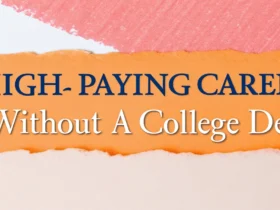

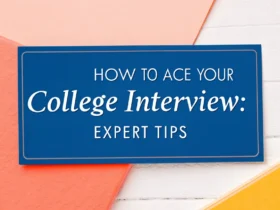
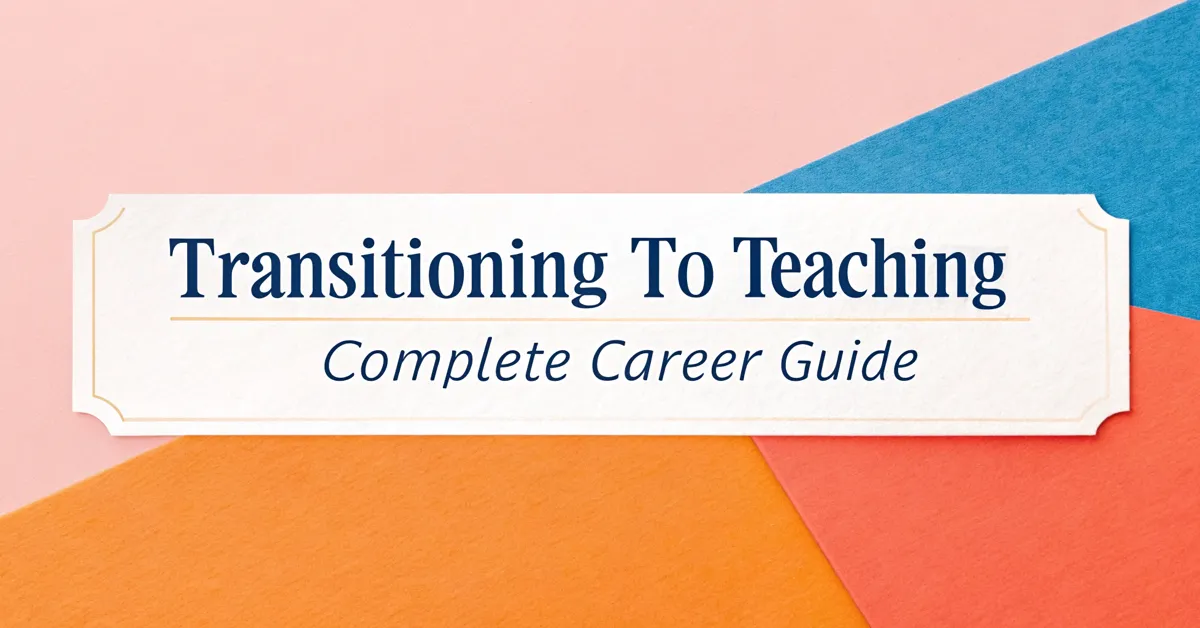
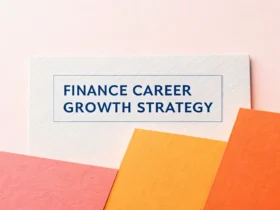




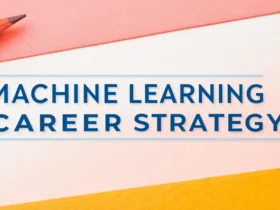


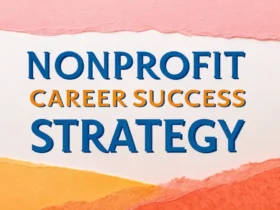
Leave a Reply
View Comments